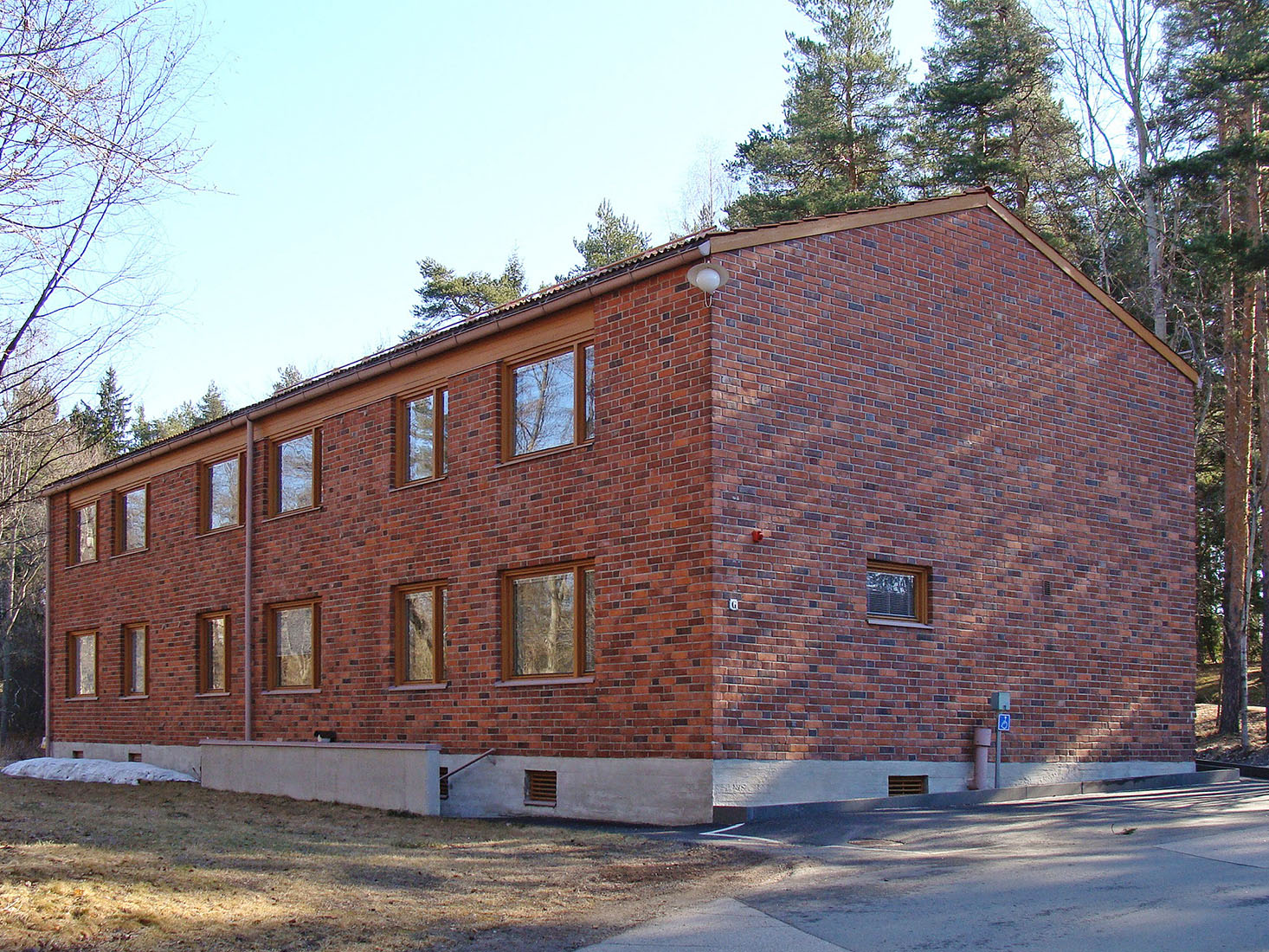 |
 |
 |
 |


Staff Residential Building
Seminaarinkatu 15, Jyväskylä
1951 - 1955
In 1950 Alvar Aalto took part in the general planning competition for the Jyväskylä Institute of Pedagogics. His proposal 'Urbs' was awarded the first prize at the end of May 1951, and the achitect was immediately commissioned to begin working on the plans of the various buildings. His proposal, reminiscent of some of his earlier projects, consists of several individual buildings, which are arranged in a U-shape, respecting the existing buildings of the complex. The central space, which is framed by the complex, is accessible only for pedestrians. Located in a ridge of pine trees close to the centre of the town, Alvar Aalto designed another piece of architecture in tense relation to the surrounding nature. Construction of the complex started in 1953, and within three years a major part of the complex was concluded, even if Alvar Aalto worked for several further years to design various buildings and additions. All buildings of the Jyväskylä Institute of Pedagogics expose Alvar Aalto's emphasis on materiality, combining white walls with wood, brick and glass. The whole complex contains buildings for various functions and was initially built for teacher training. In 1966 the college of education became a university.
This building was already part of Alvar Aalto's competition proposal. Eventually the staff residential building was errected in the north-east part of the campus, hidden by large pine trees. As the planning proceeded, the shape of the volume was simplified. The realized building with a gabled roof is a clearly subordinate architecture. Originally the building contained a total of eight flats of different sizes. All flats were small in relation to contemporary standards, but they corresponded to the living standards of the 1950s. The flats had neither bath or shower, but there was a sauna for common use in the basement. Later some of the flats were joined together to create larger apartments, and even after that, the building was used as a university guestroom. After extensive renovation the building now houses the Cultural History section of the Jyväskylä University Museum.